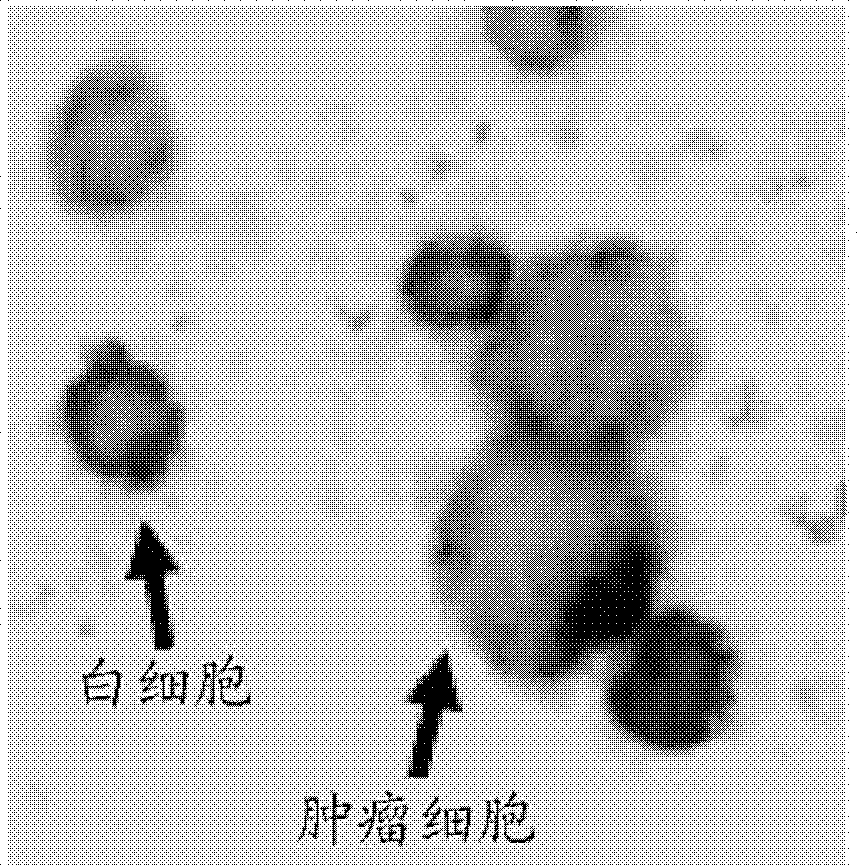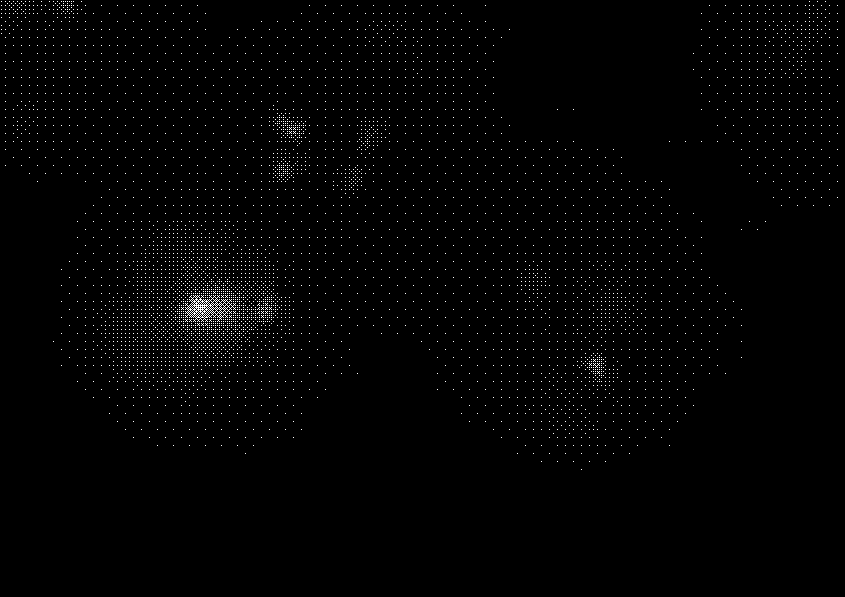Integration method for enriching and detecting rare cells from biological fluid samples
A rare cell and enrichment technology, applied in the integrated field of enrichment and detection of rare cells, can solve the problems of restricting the development of circulating tumor cells and circulating endothelial cells, and achieve the effect of promoting popular application and low cost
- Summary
- Abstract
- Description
- Claims
- Application Information
AI Technical Summary
Problems solved by technology
Method used
Image
Examples
Embodiment 1
[0065] Example 1. Enrichment of circulating tumor cells from the peripheral blood of breast cancer patients
[0066] 5ml of human peripheral blood was collected in blood collection tubes (BD, New Jersey, USA) containing ethylenediaminetetraacetic acid (EDTA) anticoagulant. After centrifuging the blood sample (700xg, 10 minutes), the supernatant can be aspirated using a pipette or automatic pipetting device to remove plasma proteins. The pellet obtained after centrifugation was resuspended in 30 ml of erythrocyte lysate (BD Pharmingen, California, USA) and incubated for 20 minutes. Specimens were centrifuged (700xg, 10 minutes) to separate the lysed erythrocyte fragments in the supernatant. After removing the supernatant, resuspend the pellet (ie, deposited cells) in 5 mL of phosphate buffer (pH 7.4). After adding 0.5 ml of magnetic beads coated with monoclonal antibody against leukocyte surface antigens such as CD45 (Invitrogen, California, USA) therein, incubate at room tem...
Embodiment 2
[0068] Example 2. Trichrome staining of circulating tumor cells enriched from peripheral blood of breast cancer patients
[0069] The enriched circulating tumor cells were placed on a glass slide, fixed with 2% paraformaldehyde (paraformaldehyde) prepared from phosphate buffered saline for 2 hours at room temperature, and washed 3 times with phosphate buffered saline. Cells were treated with biotin (Pierce, Illinois, USA)-labeled anti-keratin 8+18+19 monoclonal antibody (Abcam, UK, 1 μg / ml) and rhodamine (Pierce, Illinois, USA)-labeled anti-CD45 monoclonal antibody Antibody (Abcam, UK, 1 μg / ml) mixture (diluted from phosphate buffer) was incubated at room temperature for 30 minutes. After the slides were washed three times with phosphate buffered saline, they were labeled with alkaline phosphatase-labeled anti-biotin monoclonal antibody (Sigma, Missouri, USA, 1 μg / ml) and peroxidase (Pierce, Illinois, USA) Anti-rhodamine monoclonal antibody (Abcam, UK, 1 μg / ml) mixture (dilut...
Embodiment 3
[0071] Example 3. Detection of circulating tumor cells by chromosome fluorescence in situ hybridization
[0072] The enriched tumor cells were placed on slides as specimens. After the stained specimen was treated with 20 mg / ml RNase for 1 hour, the slide was rinsed with SSC buffer. The specimens were dehydrated with absolute ethanol for 10 minutes, then heated to 70°C for 5 minutes to denature. The specimen was then dehydrated with absolute ethanol for 10 minutes, and incubated overnight at 45°C for hybridization with the probe. After the specimens were washed with SSC buffer, they were observed with a fluorescence microscope. The specimen may be enriched tumor cells stained by the method in Example 2, and the purpose of performing chromosomal fluorescence in situ hybridization is to further confirm the authenticity of detecting tumor cells based on immunohistochemical trichrome staining. In order to facilitate rapid diagnosis, specimens can also be directly subjected to ch...
PUM
| Property | Measurement | Unit |
|---|---|---|
| diameter | aaaaa | aaaaa |
| diameter | aaaaa | aaaaa |
Abstract
Description
Claims
Application Information
 Login to View More
Login to View More - R&D
- Intellectual Property
- Life Sciences
- Materials
- Tech Scout
- Unparalleled Data Quality
- Higher Quality Content
- 60% Fewer Hallucinations
Browse by: Latest US Patents, China's latest patents, Technical Efficacy Thesaurus, Application Domain, Technology Topic, Popular Technical Reports.
© 2025 PatSnap. All rights reserved.Legal|Privacy policy|Modern Slavery Act Transparency Statement|Sitemap|About US| Contact US: help@patsnap.com


